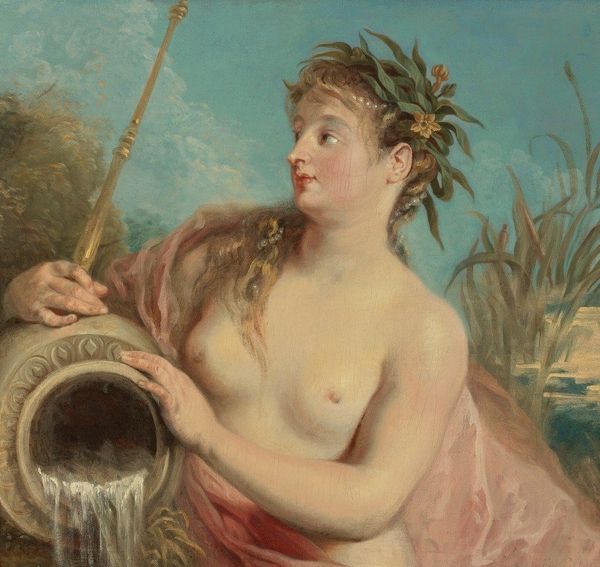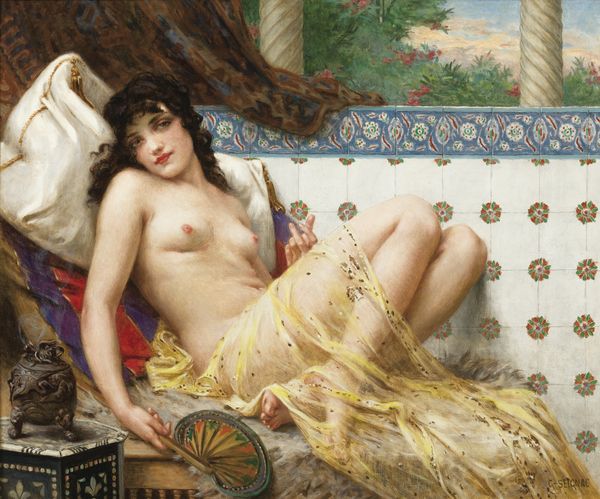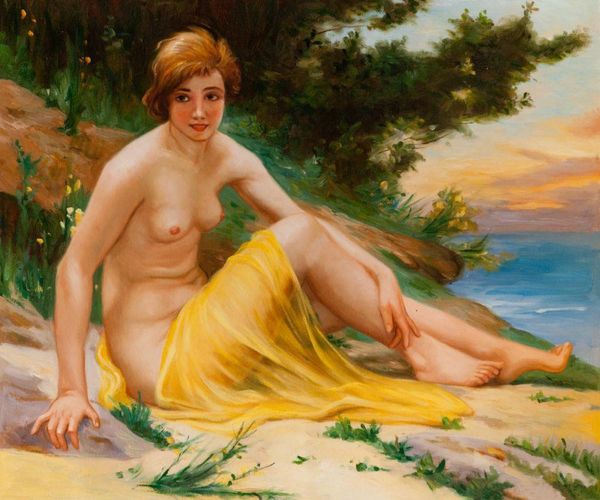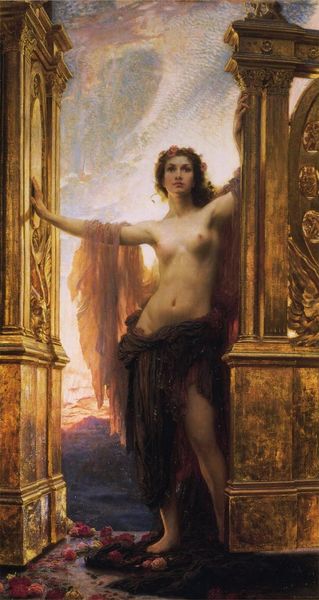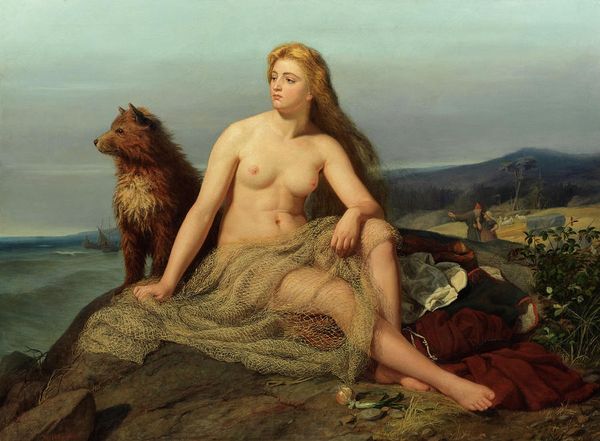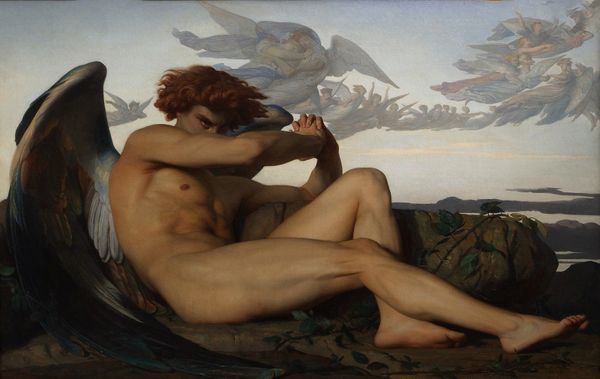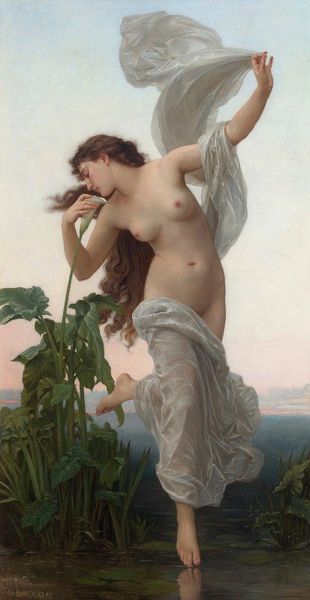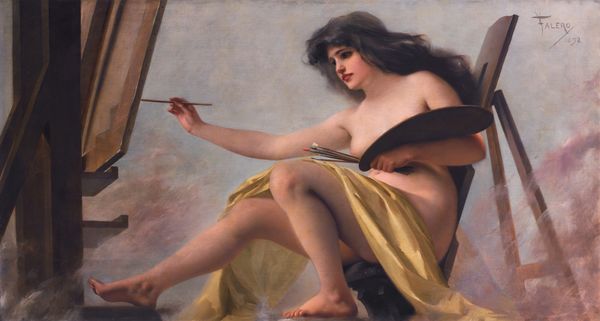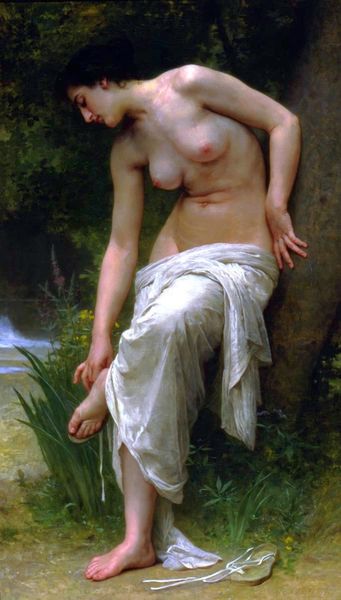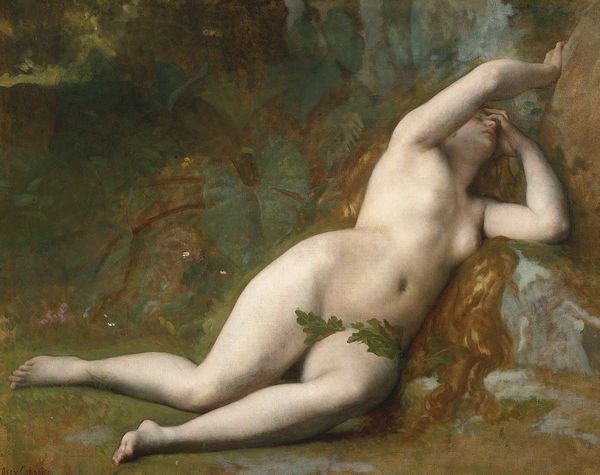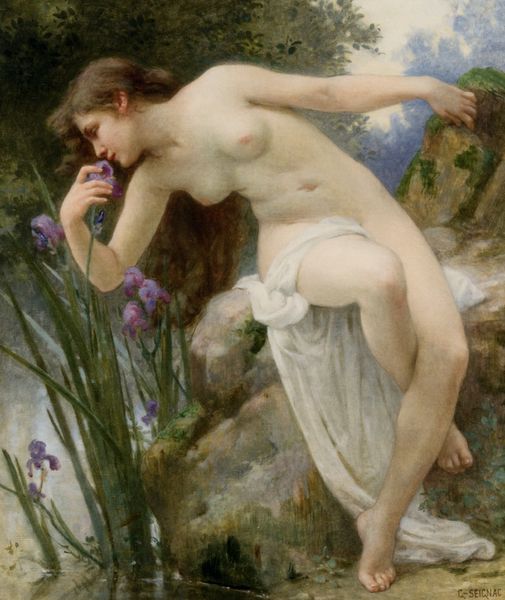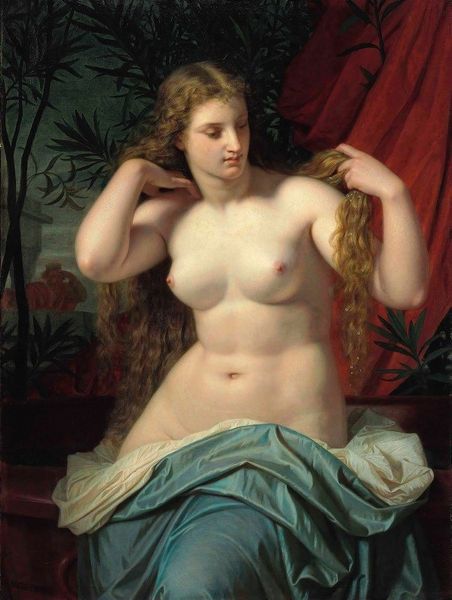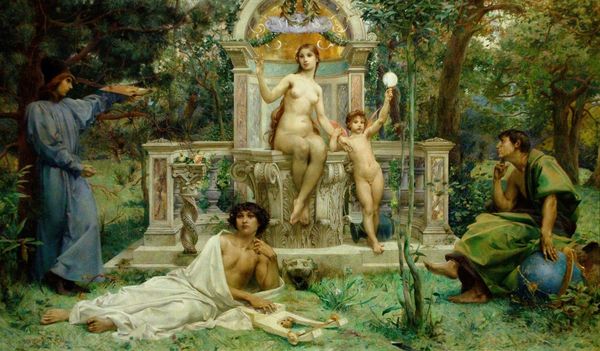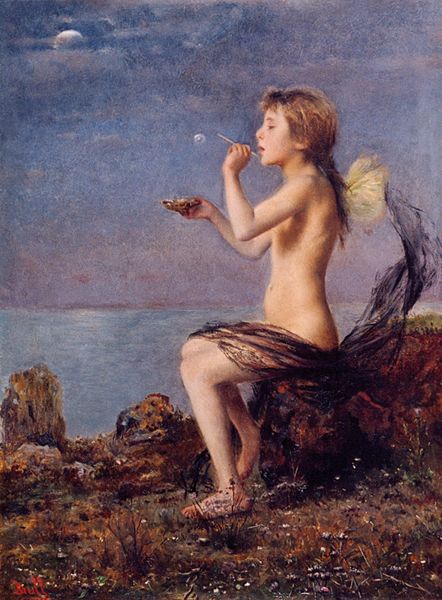
Dimensions: 106.93 x 119.89 cm
Copyright: Public domain
Curator: Perrault's "The Mirror (Narcissa)," created in 1886 using oil paints, strikes me immediately. The light feels almost theatrical, doesn't it? And the drape of fabric - it almost begs to be touched. Editor: Absolutely. I find myself pondering its place within the broader context of late 19th-century academic art. Think about the art market at the time, and how this sort of classical subject matter resonated with the established Salon system. This piece feels like a deliberate play for recognition within those circles. Curator: Indeed. Let’s consider the material properties more directly. Perrault's rendering of the figure emphasizes smooth textures and a subtle color palette that might also reflect specific trends in paint production during that era. Do you notice the almost porcelain finish of her skin? That would have been achieved through very precise layering of pigments and glazes. Editor: Which contributes directly to its public appeal! We cannot overlook how gender operates here. This wasn’t simply an artistic exercise, it was made for public display and consumption by mostly male collectors of art. The female nude served a very particular social function. Curator: That's an insightful point. And considering the "Narcissa" in the title, don't you think it hints at themes of vanity and self-obsession that resonate even now with mass media? Editor: I do. Though Perrault couches this in classical mythology, he is undeniably also making comments about modern concepts of beauty and female representation that would have been a contentious topic then, just as they are today. It implicates both the subject of the painting and those who observe it. Curator: Yes, and her access to even that elaborate hand-mirror would reflect a level of affluence - the art market itself being dependent on wealth and consumption! I’m curious as to the social position of the model. Editor: Exactly. So, viewing "The Mirror (Narcissa)" through a social-historical lens challenges viewers to reflect on beauty standards and power relations which affect both the production and consumption of images. It’s art deeply entwined with its era. Curator: Precisely. I come away seeing how Perrault’s choice of material execution not only aligns with but even promotes existing notions of gender, beauty, and value at that specific cultural moment. Editor: And seeing the social history behind that gorgeous image definitely changes my appreciation for the complex layers embedded within this one painting.
Comments
No comments
Be the first to comment and join the conversation on the ultimate creative platform.
